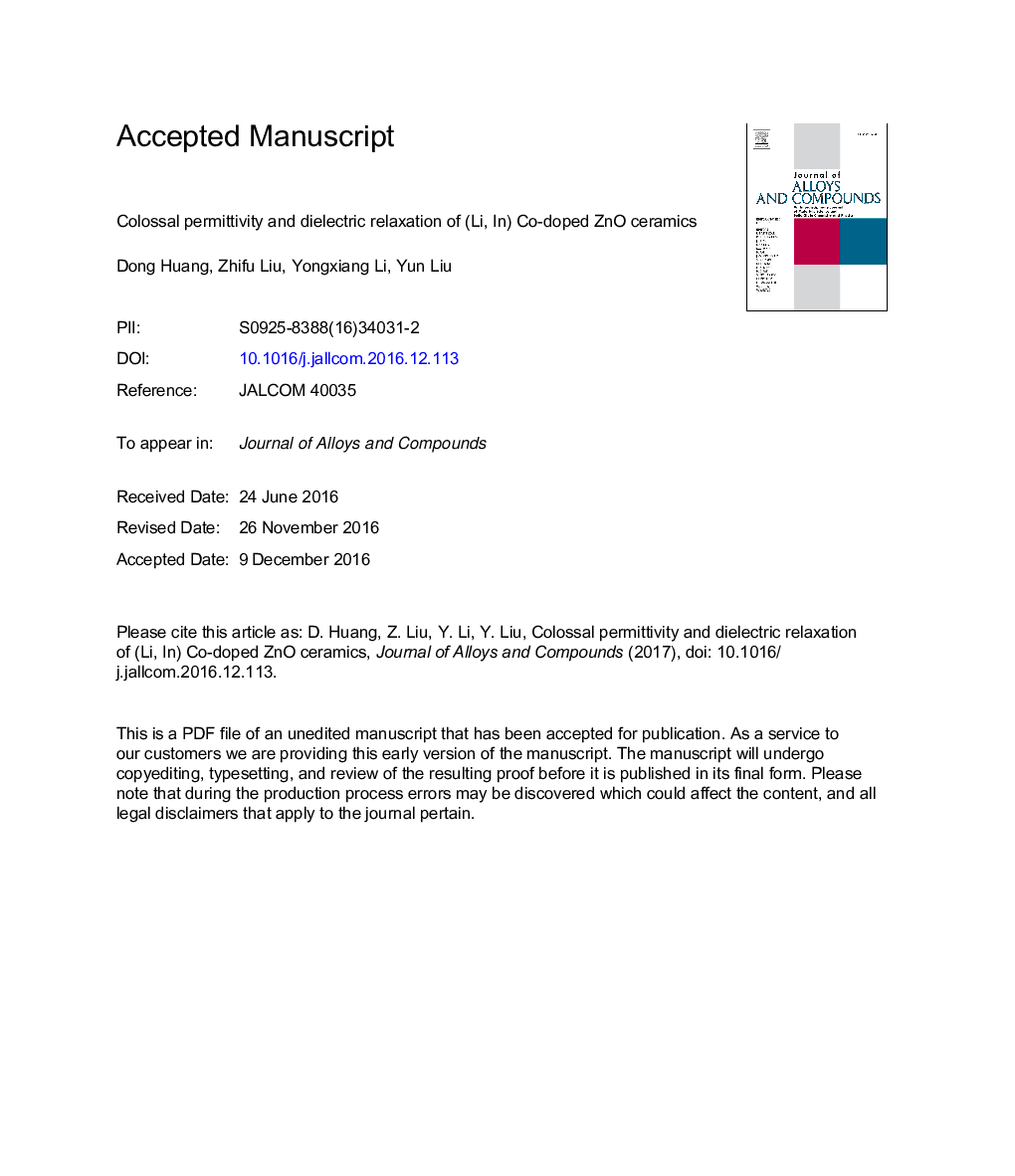| Article ID | Journal | Published Year | Pages | File Type |
|---|---|---|---|---|
| 5460797 | Journal of Alloys and Compounds | 2017 | 19 Pages |
Abstract
In this study, a colossal permittivity up to 3800 and a low dielectric loss of 0.11Â at 1Â kHz have been obtained from the (Li, In) co-doped ZnO ceramic [Zn(1â2x)(Li, In)xO] when x was 0.5%. Electric modulus spectroscopy and impedance analysis were used to investigate the origin of its high permittivity. Two relaxation peaks and a dielectric anomaly were observed in the temperature range of 293-363Â K. According to the Debye relaxation theory, the low- and high-temperature relaxation peaks with activation energies of 0.09Â eV and 0.29Â eV, have been attributed to the hopping of singly and doubly charged oxygen vacancies, which are created by lithium and indium ions doping and oxygen deficiency during sintering process. After thermal treatment in an oxidizing atmosphere, the peaks related to the singly and doubly charged oxygen vacancies disappear and the permittivity reduces to â¼460Â at room-temperature. From the X-ray photoelectron spectra (XPS), the concentrations of oxygen vacancies decrease after the O2-annealing process. The results reveal that the oxygen defects would be the main origin of the colossal permittivity of co-doped ZnO at room-temperature range.
Related Topics
Physical Sciences and Engineering
Materials Science
Metals and Alloys
Authors
Dong Huang, Zhifu Liu, Yongxiang Li, Yun Liu,
